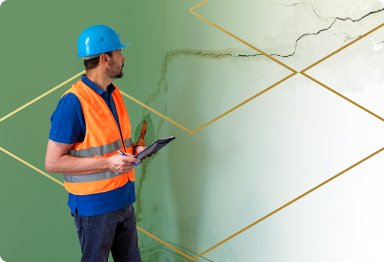Design and Building Practitioners Act Compliance Quiz
Find out whether your planned works need to comply with the Design and Building Practitioners Act 2020.
Building Defects Advice
Strata committees & lot owners
[1] Metropolitan Fire and Emergency Services Board, Post Incident Analysis Report, 25 November 2014, page 36
[2] Victorian Building Authority External Wall Cladding Audit Report, issued 17 February 2016, page 6
[3] Metropolitan Fire and Emergency Services Board, Post Incident Analysis Report, 25 November 2014, page 4
[4] Metropolitan Fire and Emergency Services Board, Post Incident Analysis Report, 25 November 2014, page 36
[5] Metropolitan Fire and Emergency Services Board, Post Incident Analysis Report, 25 November 2014, page 57
[6] Victorian Building Authority External Wall Cladding Audit Report, page 6
[7] Victorian Building Authority External Wall Cladding Audit Report, page 6
[8] Victorian Building Authority External Wall Cladding Audit Report, page 6
[9] Victorian Building Authority External Wall Cladding Audit Report, page 7
[10] Victorian Building Authority External Wall Cladding Audit Report, page 7
[11] Planning Circular BS15-001, Building Regulation Advisory Note, External Walls and Cladding, NSW Department of Planning and Environment
[12] Pages 673 – 674 Legislative Council Questions and Answers No. 28 – Wednesday 14 October 2015
***The information contained in this article is general information only and not legal advice. The currency, accuracy and completeness of this article (and its contents) should be checked by obtaining independent legal advice before you take any action or otherwise rely upon its contents in any way.
